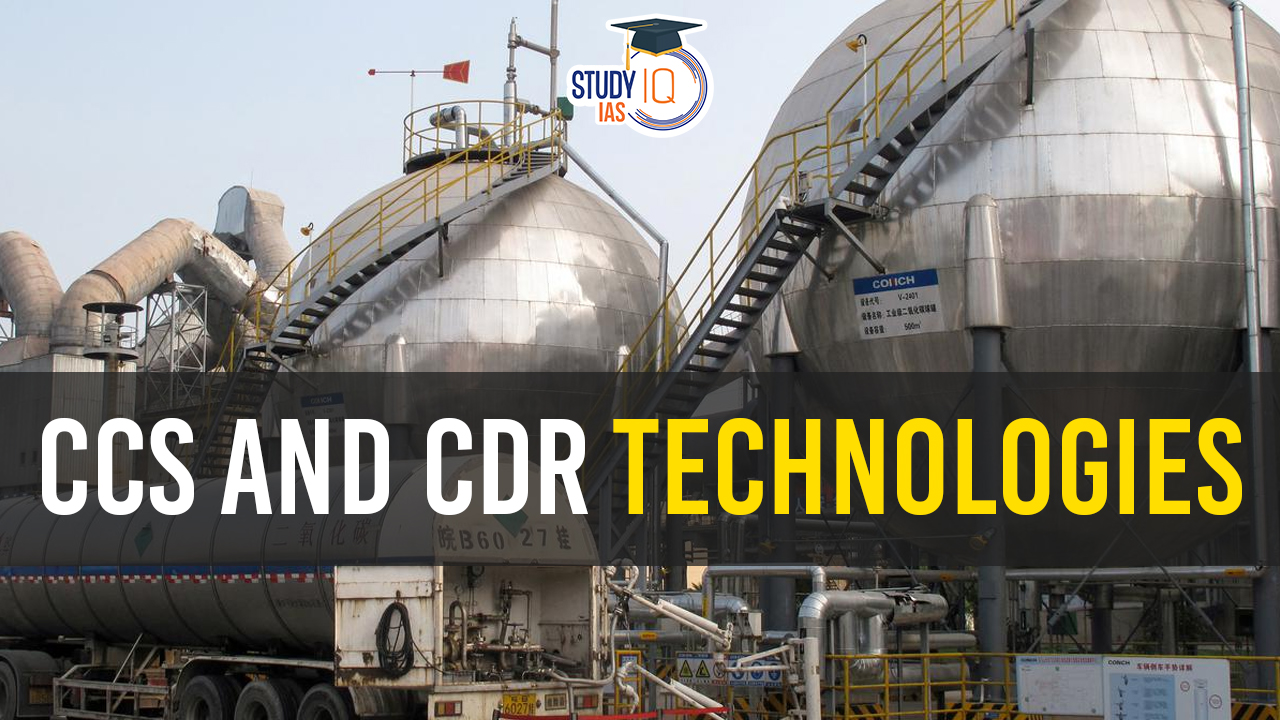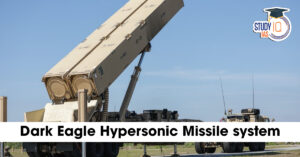Table of Contents
Context: COP28 talks debate CCS and CDR for climate change mitigation. While crucial for the 1.5°C goal, concerns exist about their scale, equity, and potential to mask continued fossil fuel use.
We’re now on WhatsApp. Click to Join
CCS (Carbon Capture and Storage)
What is CCS?
- CCS captures carbon dioxide (CO₂) at the source of emissions before it enters the atmosphere.
- This includes sources like fossil fuel power plants and industrial processes like steel and cement production.
How does CCS work?
- There are various methods for capturing CO₂, including absorption, adsorption, and membrane separation.
- Captured CO₂ is then transported and stored underground in geological formations like depleted oil and gas fields or saline aquifers.
Limitations
- Scalability: CCS is still under development and hasn’t been proven effective at large scales.
- Cost: CCS is expensive and requires significant investment.
- Leakage: There are risks of CO₂ leaking from storage sites, potentially negating the benefits of capture.
- Energy needs: CCS requires additional energy to capture, transport, and store CO₂.
- Methane emissions: Leakage of methane from upstream oil and gas production can undermine the benefit of CCS.
Role in achieving climate goals
- IPCC AR6 report suggests CCS can be used to counterbalance hard-to-abate emissions, but not to justify continued high fossil fuel use.
- CCS with high capture rates (90-95%) and permanent storage is crucial.
- It shouldn’t replace direct mitigation efforts like reducing fossil fuel reliance.
CDR (Carbon Dioxide Removal)
What is CDR?
- CDR removes CO₂ from the atmosphere, either through natural or technological means.
- Natural methods:
- Afforestation and reforestation: Planting trees absorb CO₂ through photosynthesis.
- Enhanced weathering: Crushing certain rocks can accelerate natural CO₂ uptake.
- Technological methods:
- Direct air capture (DAC): Machines capture CO₂ directly from the air.
- Bioenergy with carbon capture and storage (BECCS): CO₂ from burning biomass is captured and stored.
Limitations
- Land requirements: Many CDR methods, like afforestation, require significant land area, raising concerns about equity and competition with other land uses like agriculture.
- Scalability: Technological CDR methods are still under development and need to be scaled up significantly.
- Cost: CDR can be expensive, and questions remain about who will pay for it at scale.
Role in achieving climate goals
- IPCC AR6 report suggests CDR is necessary to achieve the 1.5°C warming limit with no or limited overshoot.
- CDR should be used strategically to compensate for hard-to-abate emissions, not to justify continued fossil fuel use.
- Research is crucial to determine the viability and scalability of various CDR methods.
Pitfalls
- Reliance on CCS and CDR could lead to continued high emissions.
- Some CCS applications use captured CO₂ to extract more oil, contradicting its climate benefits.


 Kavachi Volcano: Location, Features, Eru...
Kavachi Volcano: Location, Features, Eru...
 Dark Eagle Hypersonic Missile System: Fe...
Dark Eagle Hypersonic Missile System: Fe...
 National Project for Strengthening Disas...
National Project for Strengthening Disas...

























